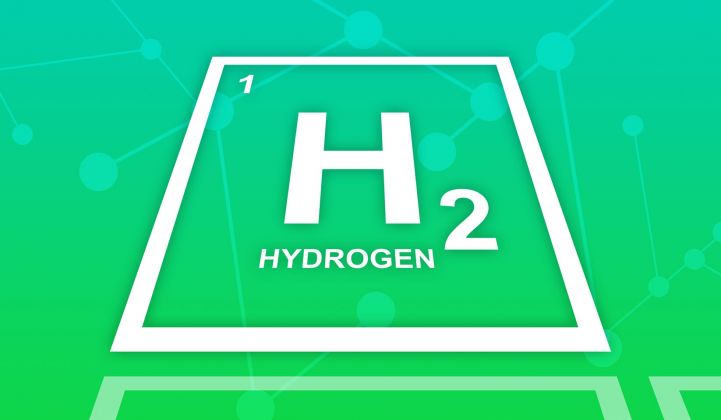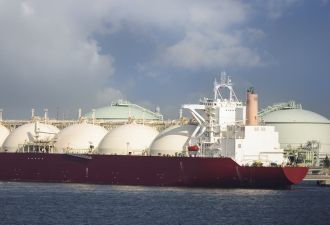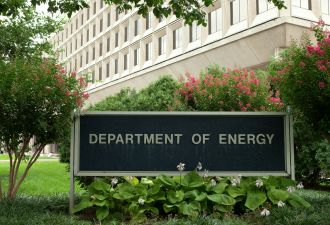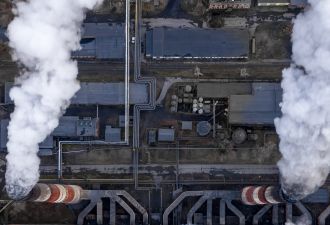It seems everyone wants to get in on the ground floor when it comes to green hydrogen. Utilities and oil majors both have a head start with their mixture of renewable power capacity, gas transmission assets and an existing set of end users.
But chemical manufacturers could be a third class of big green hydrogen players. AkzoNobel began investigating a 20-megawatt electrolyzer as far back as 2018. U.S. industrial gases firm Air Products is planning what would be the world's largest green hydrogen complex, a 4-gigawatt facility in Saudi Arabia.
On Tuesday, chemical giant Ineos joined the green hydrogen fray, announcing that its Inovyn subsidiary will launch a business unit aiming to hit the lowest production costs yet recorded for the zero-carbon fuel. It will be headed by Wouter Bleukx, who is transferring over from Inovyn’s chlor and alkali business.
Chlorine is produced from salty water using giant electrolyzers that dwarf today's operational fleet of freshwater hydrogen electrolyzers. That could give Ineos and Inovyn a big advantage in making the shift to producing hydrogen via electrolysis, whether it's using electricity generated by renewable energy or other sources.
“It is clearly our ambition to produce hydrogen, preferably with alkaline water electrolyzers and renewable energy,” Bleukx said in an interview with GTM. “But at this stage, we do not exclude anything because we have to see how the technology develops over the next years.”
Specifically, Inovyn is monitoring the progress of carbon capture technology for making blue hydrogen via natural-gas-fueled electrolysis. What path it takes could depend on the price of renewable energy as the deployment of new capacity continues.
Bleukx said the chlorine and salt electrolyzers that it is used to working with are around 200 megawatts in size. That’s an order of magnitude larger than any operational hydrogen electrolyzer, but the scope is well aligned to some of the larger green hydrogen projects that have been announced this year.
Aside from its operational experience with electrolyzers, the company also manufactures them. It will make its own alkaline electrolyzers for hydrogen too, though it hasn’t ruled out a partnership with an existing hydrogen electrolyzer maker. That could offer significant cost savings and in-house design advantages.
But the two more determinant factors in the cost of green hydrogen production are the utilization rate of the electrolyzers and the price of electricity they will be using. Green hydrogen is about four times as expensive to produce as hydrogen derived from fossil fuels today.
However, Wood Mackenzie expects the cost of green hydrogen to halve by 2030, largely driven by a patchwork of national hydrogen strategies around Europe and the EU’s own 2030 electrolyzer targets of 40 gigawatts within its own borders and 40 GW just outside but importing into the EU.
Balancing hydrogen supply and demand
Keeping utilization rates high is a priority for green hydrogen production. In the early years, nascent and difficult-to-forecast demand will be a problem. Utilities like RWE can look to create their own demand via vehicle charging or injection into the gas grid, while Ørsted is partnering with ammonia manufacturers, oil players and transportation hubs.
Oil majors also have their own demand. But the degree of alignment for hydrogen manufacture depends on their own in-house refining and petrochemical capabilities. BP recently sold off its petrochemicals business for $5 billion — to Ineos.
Ineos is already producing 300,000 tons of hydrogen a year. The completion of its Project One facility in Antwerp will up that to 400,000 tons, Bleukx said. The vast majority of this is produced from gasification of fossil fuel feedstocks, however, rather than electrolysis, whether green or blue.
“Our ambition is to create strategic partnerships further downstream to make sure that we have big clusters where the hydrogen is produced and consumed at the same time,” explained Bleukx. This existing hydrogen supply will enable it to serve customers now with decarbonized hydrogen added to the offering as it brings its (mostly) green hydrogen online.
Ineos, a British company operating 127 sites on four continents, was founded by Sir Jim Ratcliffe, who is the U.K.’s richest person courtesy of his 60 percent ownership of the firm. Many of those 127 sites are in Europe’s major industrial heartlands, perfectly placed to find other sources of demand for carbon-free hydrogen, an advantage it shares with oil majors.
That’s the starting point for what will be primarily a green hydrogen business. So does Inovyn’s own demand give it an advantage over other would-be hydrogen players?
“Absolutely. I think one of the challenges, not only for us but for many who go into the hydrogen business, is to have a good supply-and-demand balance to optimally produce and consume this hydrogen. It will be one of the key issues,” said Bleukx.
“We certainly have the experience and the know-how to build not only electrolyzers but also everything around that because we have done many of these big projects."
Ineos’ rapid growth essentially involved buying struggling chemicals facilities, investing in them where necessary and slashing excess costs. Ineos recorded revenue of $85 billion in 2019. For comparison, U.S.-based chemicals giant Dow posted revenue of $43 billion in 2019.
So with scale and experience on its side, is Bleukx confident that the company can drive down the cost of green hydrogen sooner than current forecasts estimate?
“It’s difficult to say at this stage, but of course it is our ambition at Ineos to be the cost leader in everything we do — it’s in our DNA,” he said.



